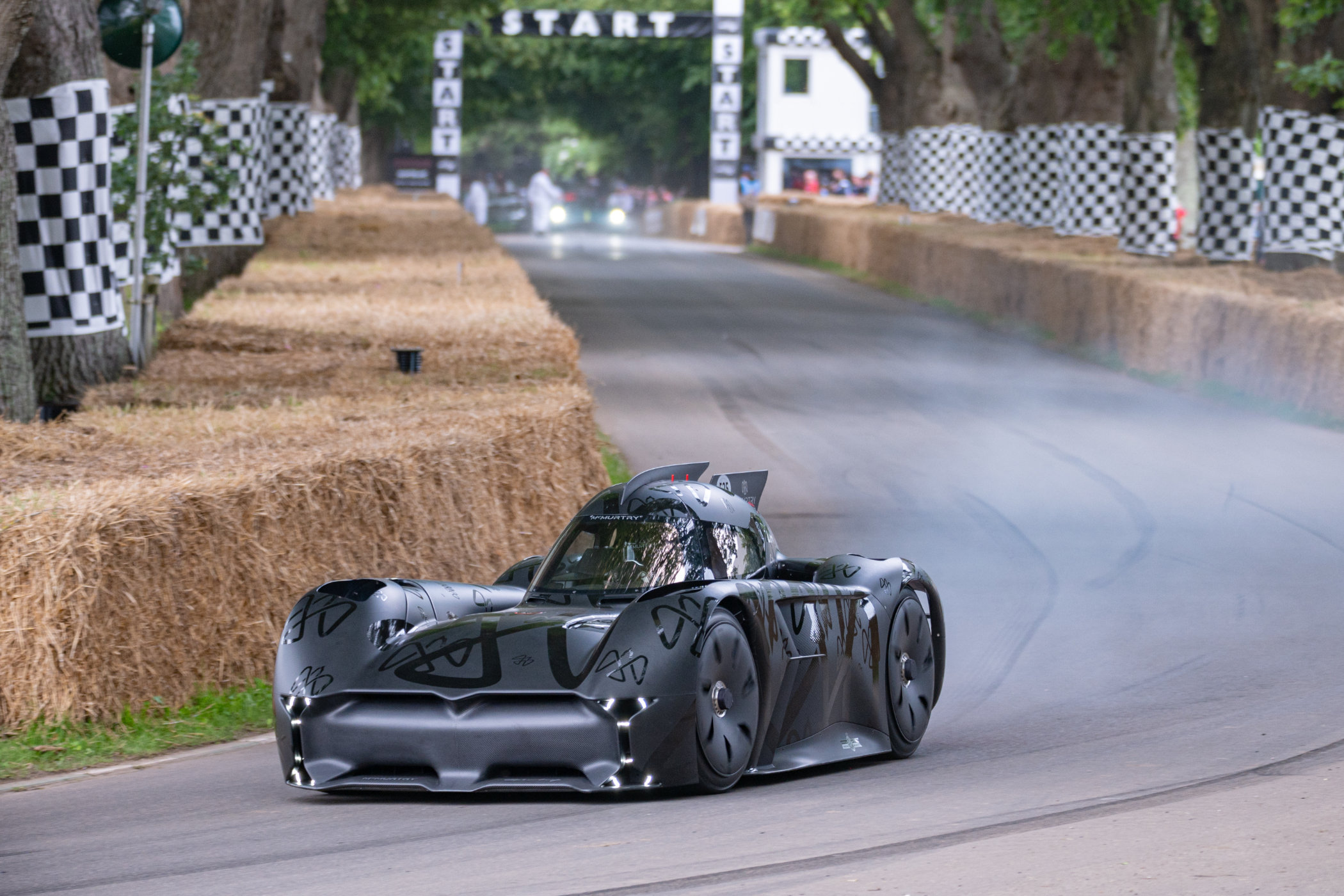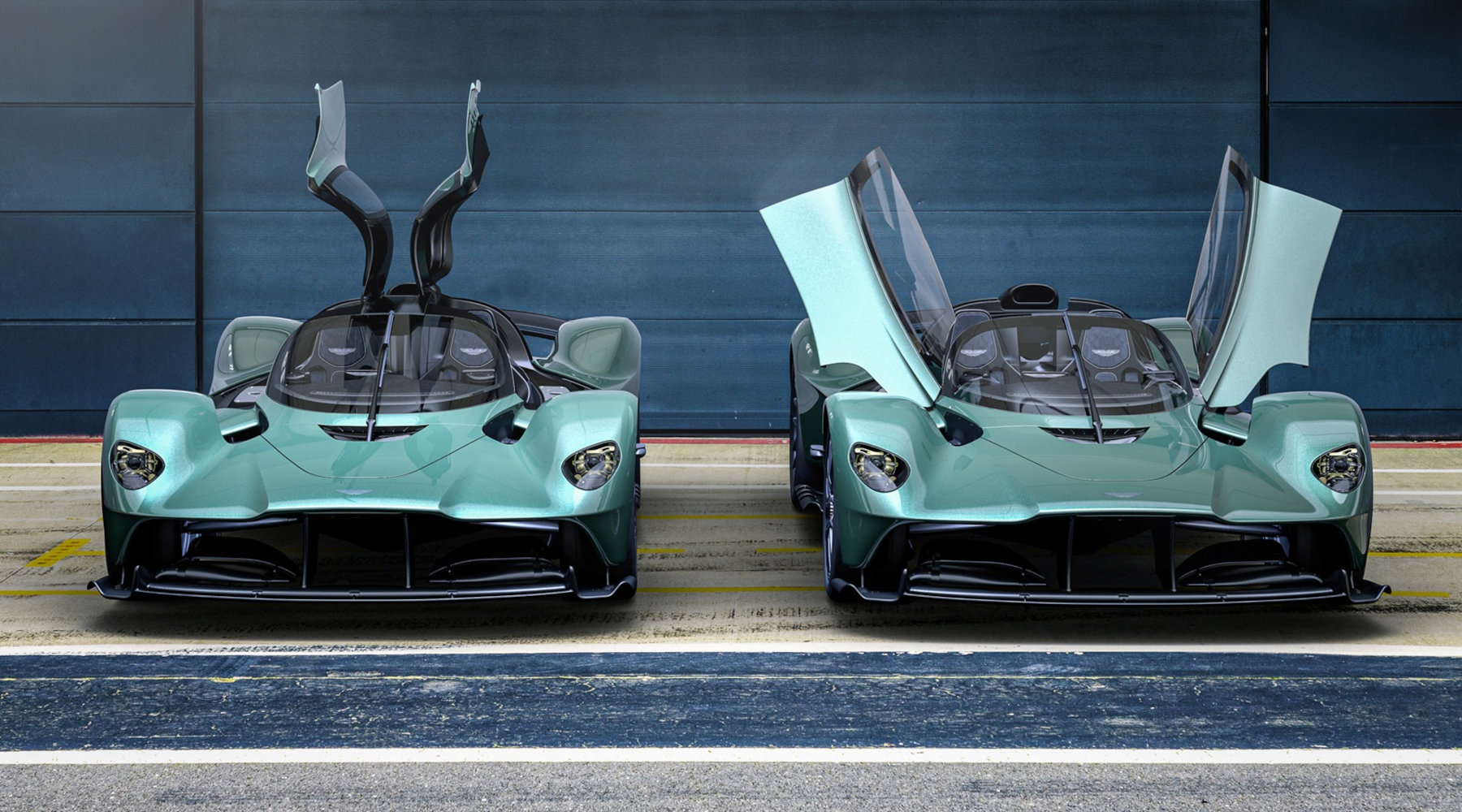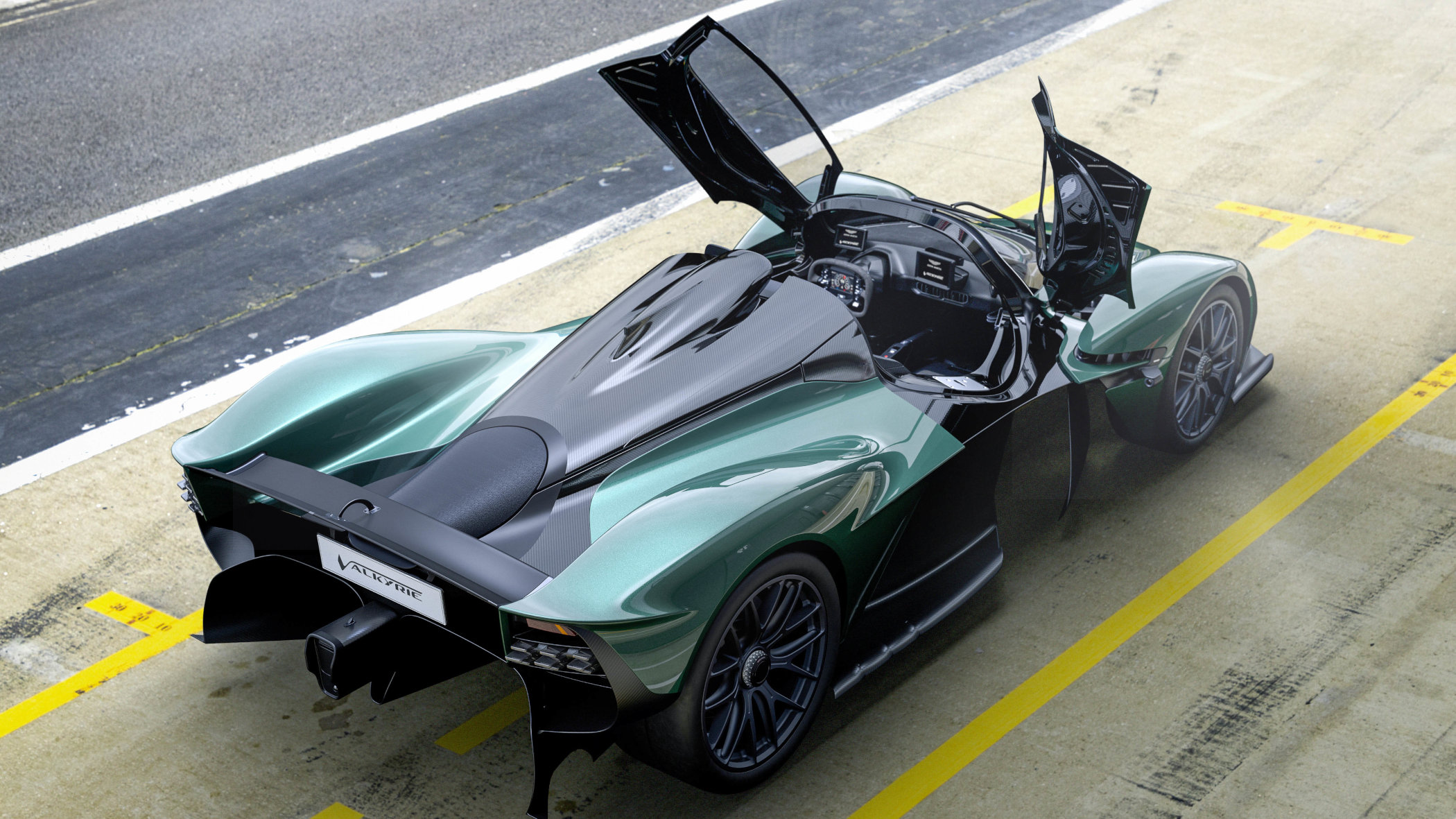Three Of The Most Incredible Cars Seen at the Goodwood Festival of Speed 2021
An electrifying mini-Batmobile, a screaming mythological entity, and a water-emitting racer
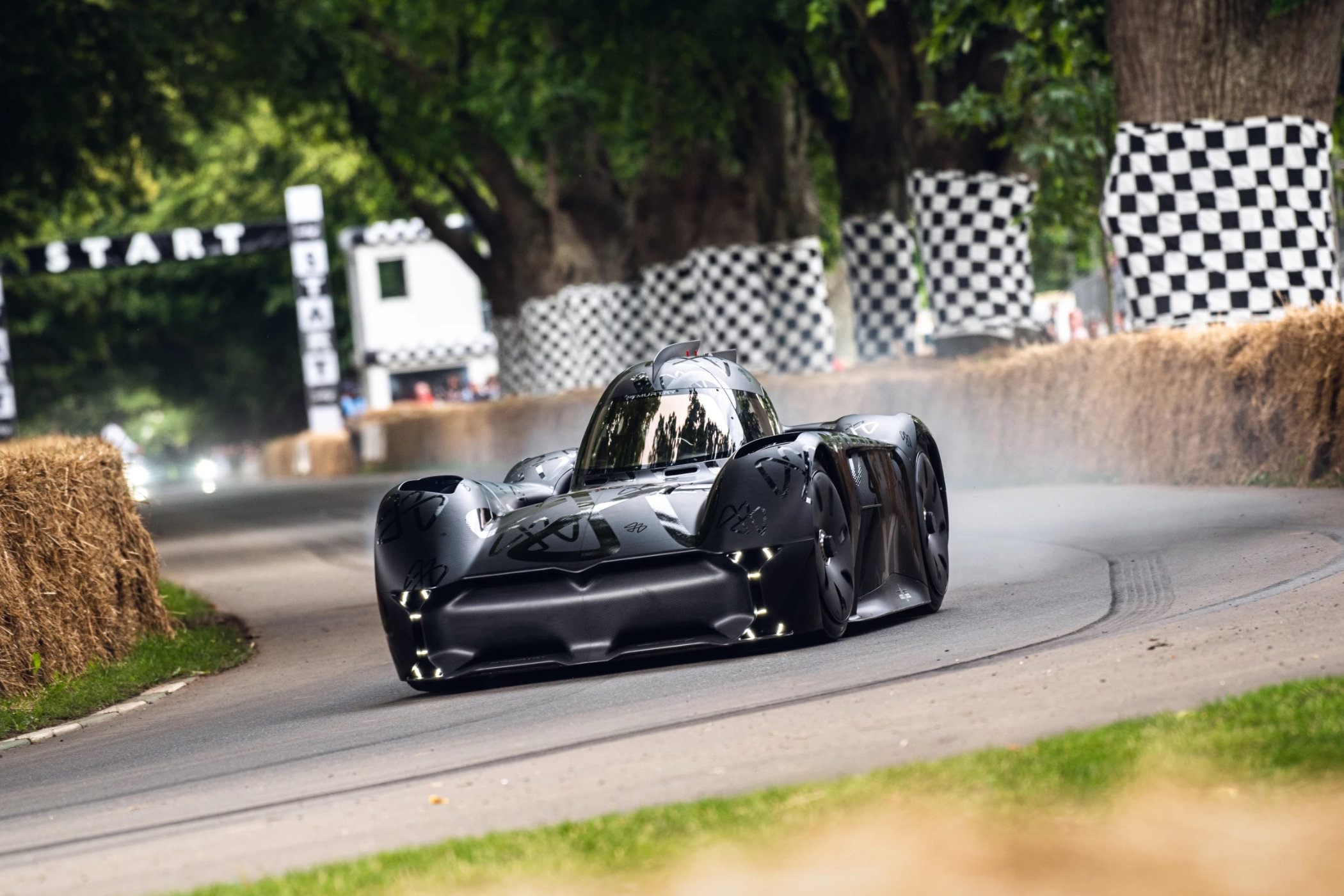
Even though it’s behind us already, the annual Goodwood Festival of Speed is always a delight to witness, whether it’s live or online through the magic of YouTube. It’s famous for hosting one of the world’s biggest celebrations of automotive technology in the world. Held on the Duke of Richmond’s vast estate, there’s loads of stuff to discover for those in attendance. And every year, the best of the automotive world both old and new parade up the hill climb course to be displayed to the public, or compete in the actual timed hill climb event. It is one of the highlights of any Petrolhead no doubt, even if you’re not able to go. We’ve selected three cars from this year’s event that wowed us in one way or another.
Editor’s Note; I realize there’s plenty of interesting cars to select from all the attending vehicles during this year’s Goodwood FoS but we had to draw a line somewhere. And who knows, it might keep some other topics left on the shelves for later!
The McMurtry Spéirling
What looks like a pocket-size Batmobile is actually a blank canvas interpretation of a possible future of motorsports, making it’s big public debut at Goodwood Festival of Speed earlier this year. The radical McMurtry Spéirling is the brainchild of Sir David McMurtry, an Irish inventor, and businessman. The project started in 2016 and with the help of a handful of gifted engineers and automotive designers, the team set out to develop what could be the next big step forward in motorsports.
From the outset, the goal has been to develop a record-breaking track car, with a focus on building a small car that can go further and faster. The result is the somewhat strange but intoxicating McMurtry Spéirling. This electrically driven car is quite a thing to behold. It looks small, because it is, and is shaped like a miniature Batmobile. While that might be incidental, there’s a very clear method to the madness on display here.

The Spéirling, which means thunderstorm in the Irish language, is intentionally small. It is a unique one-off vehicle, aiming to change the perception of EV’s and their limitations. The idea was to create a car that is as small and agile as possible but packing the biggest electrical punch possible as well. To help achieve its goals, the Spéirling uses all sorts of aero trickery, but primarily a pair of giant fans fitted underneath the car to generate massive amounts of downforce.
The single-seat car measures 3,2m in length, 1,5m in width, and just over a meter in height. But don’t let its small size fool you, this is a very serious piece of engineering. It weighs less than 1,000 kilo’s and has over 800hp which means it’s close to a 1 to 1 power-to-weight ratio. Zero to 300kph should take less than 9 seconds in the car’s current configuration, with a top speed of over 320kph. The current battery pack gives you a range of 30 to 60 minutes, depending on circumstances.
More details on the fascinating car, explained by members of the McMurtry team;
For more information, please visit McMurtry’s website.
Aston Martin Valkyrie and Valkyrie Spider
Now, the Valkyrie by Aston Martin has been a long time coming so isn’t technically a surprise anymore. BUT, and this is important, it is production-ready! And as a bonus, Aston Martin has presented the Spider during the Goodwood Festival of Speed. We’ve already featured the closed-cockpit Valkyrie in an episode of the Petrolhead Corner at the beginning of the year, listing some of the most anticipated cars to be launched this year, so it’s only fitting to spend some more words on it, right?
The Valkyrie project has seen more than e few twists and turns. Originally it was the brainchild of laureled F1 engineering mastermind Adrian Newey and developed between Aston Martin and the Red Bull Racing team. But considering the two outfits since split up, with Aston Martin becoming a “works” Formula 1 team together with Lawrence Stroll’s funding, RBR and Newey have left the project.
The Valkyrie project aims to produce the closest thing to a road-going Formula 1 car to date, a similar concept to the Mercedes AMG Project One, although vastly different in approach. The Valkyrie uses a Cosworth developed 6,5-liter V12 engine which rev’s to over 11,000 rpm and is assisted by a hybrid motor integrated into the gearbox. The V12 produces 1,000bhp and the EV unit another 160bhp. The electric motor is primarily used to fill in torque gaps for the combustion engine to have peak performance at any given moment.
Recently Aston Martin has chopped the roof of the GBP 2,5 million hypercar, which can be considered the real surprise here. The otherworldly-looking machine is set to be delivered to clients sometime soon.
Top Gear has had the undoubtedly impressive experience of being a passenger in the Valkyrie as it is being rushed up the hill during the Goodwood Festival of Speed this year. I suggest you send the kids out the room, turn the volume up and enjoy the screaming 6,5 litre Cosworth V12 engine;
More details on this exhilarating piece of engineering can be found on Aston Martin’s website.
Mission H24
This is another racing project that attended the Goodwood Festival of Speed this year and is destined to (try and) reshape the world of motorsports; the Mission H24 project. The clue is in the name as to what it is, and what its intentions are. Whilst the automotive world is quickly changing from petrol/diesel power to electric power, there’s one alternative that has seemingly been left in the dark; hydrogen.
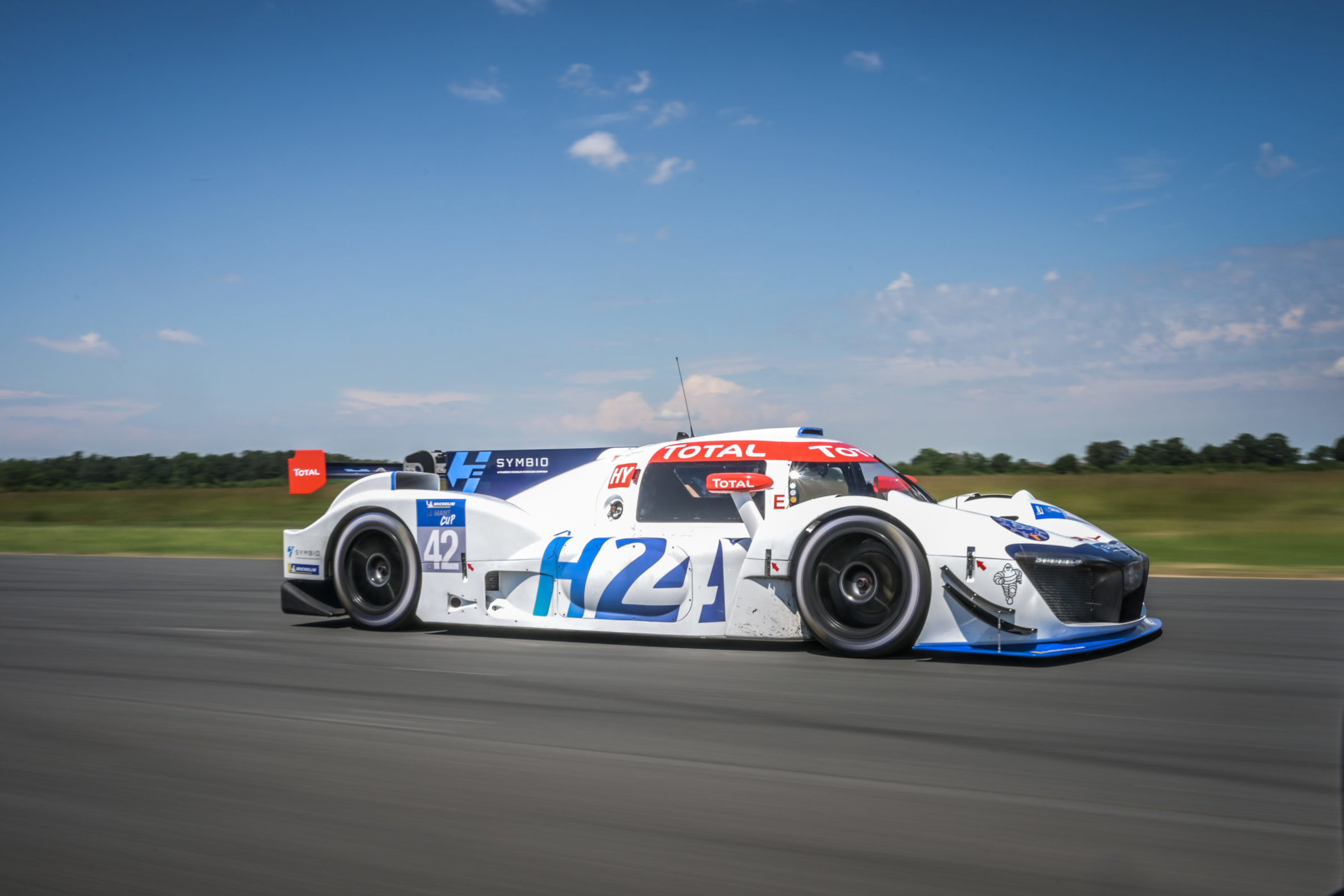
The Mission H24 project is an attempt to showcase the current hydrogen technology available and push it into the future as a reliable, safe, and sustainable energy source. This project is already a couple of years in the making and is a joint venture between Le Mans 24 Hours organizers ACO and GreenGT, an independent electric-hydrogen technology company. Two cars have been developed so far, with one goal in mind; compete in the 2024 Le Mans 24 Hours.
Although it seems a long way out, the results look promising. The first car built, the LMPH2G has already made several demonstrational runs, and the new H24 car is set to do the same. The second-gen car, called H24, shares the same engine but has a new aero kit and other technological updates, bringing it closer to it’s target of racing at Le Mans. The car’s technology is still very much developmental, meaning that while it looks good on paper, there’s still a lot to be figured out. But, as these things tend to go, it attracts major players in the necessary fields of the automotive industry, as well as other sectors, to make this concept succeed.
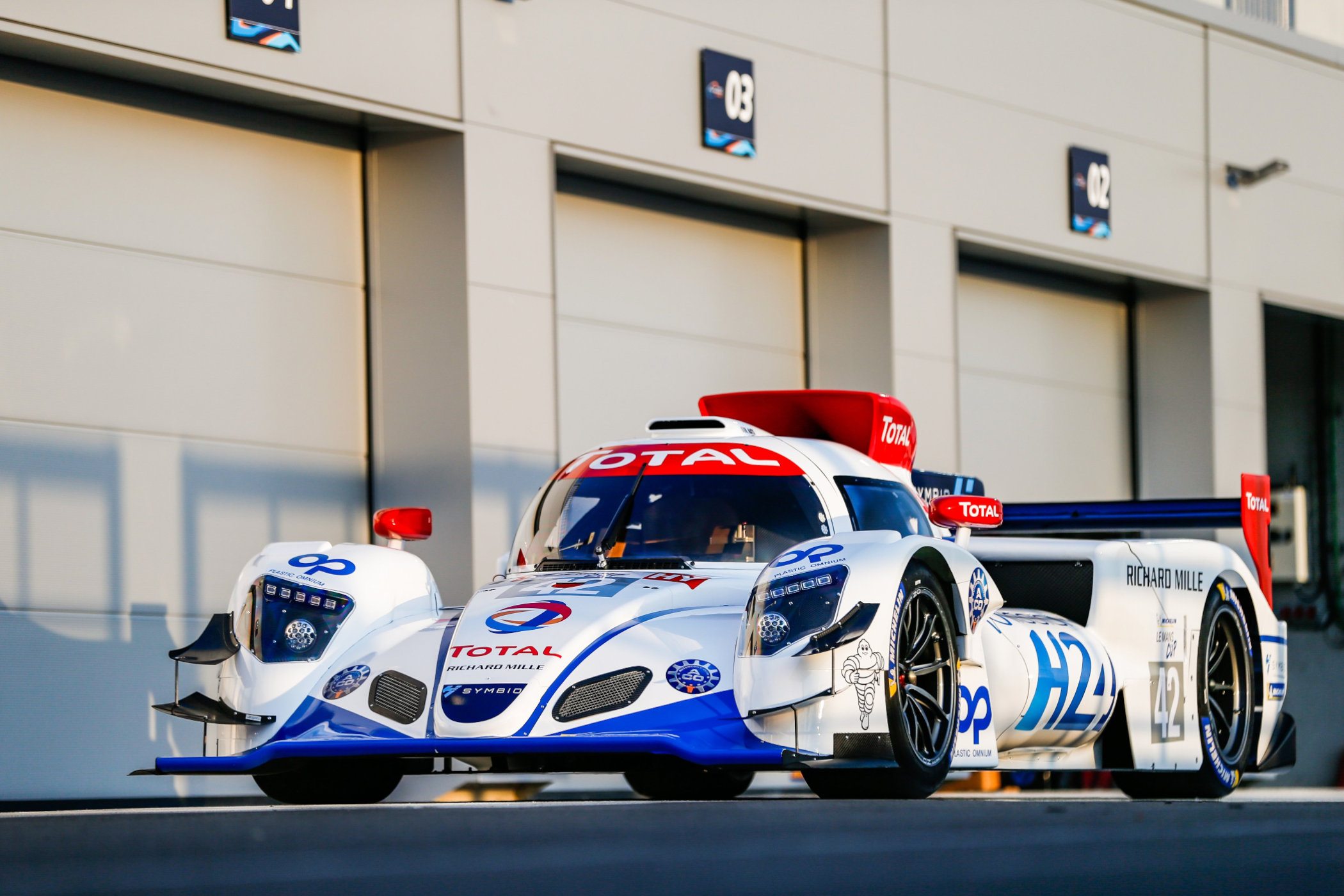
So, time for some technical details on the cars. A hydrogen-powered car relies on a fuel cell where hydrogen and oxygen are used to generate energy, a principle discovered in the 19th century. In the two Mission H24 cars, this electric energy is used to drive the car. The fuel cell uses a membrane that is fed with hydrogen from one side, stored in tanks on the car, and air from outside the car (when moving) from the other side. The membrane only uses the oxygen atoms, reacting when combined with the hydrogen molecules. During this process three things are generated; electricity, heat, and water.
The electric energy is sent to the electric motors powering the car, the heat is rejected out of the car, and the only other byproduct coming from this is clean drinkable water. Thanks to this technology you create a zero-emission vehicle. In terms of performance, this is already close to matching the LMP2 prototype cars, as the H24 cars produce about 600bhp. With technological developments increasing the efficiency and performance of the cars, it is turning into a proper alternative to pure EV, petrol, and hybrid race cars and subsequently for road cars as well.
More information on this incredible project can be found on Mission H24’s website.

